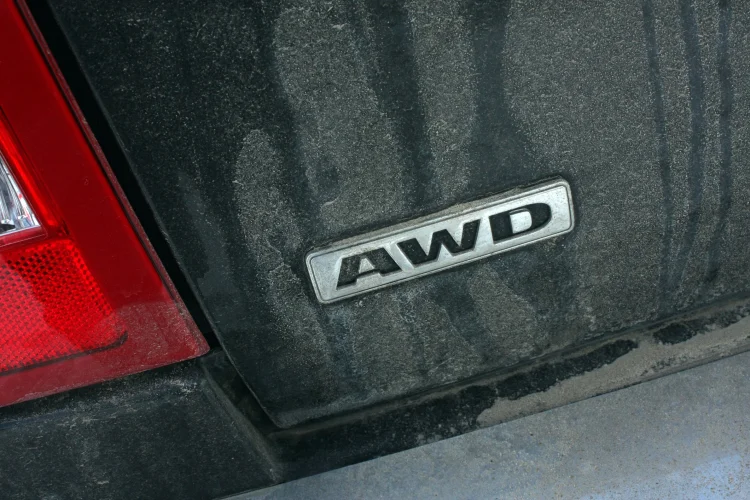All-Wheel Drive (AWD) vs. Four-Wheel Drive (4WD): Which System Is Right for You?
awd vs 4wd
4,907When it comes to choosing a vehicle that can confidently tackle slippery roads, light off-roading or rough weather, the debate often boils down to two drivetrain systems: All-Wheel Drive (AWD) and Four-Wheel Drive (4WD). Though the acronyms sound similar, they serve distinct purposes, come with unique advantages, and suit different driving styles. Here’s what you need to know to make the right choice.

What Is All-Wheel Drive (AWD)?
AWD is a full-time system that distributes the power to all four wheels automatically, without driver intervention. Modern AWD systems use electronic controls and sensors to monitor wheel slip, road conditions, throttle input, and steering angle, then allocate torque to the wheels with the most grip.
Key Characteristics of AWD:
-
Automatic Engagement: No need to switch modes—the car continuously adapts torque distribution.
-
On-Demand Traction: Primarily powers the front (or rear) axle and sends torque to the opposite end when slippage is detected.
-
Seamless Handling: Improves stability in rain, light snow, and dry pavement cornering.
-
Fuel Economy: Generally lighter and more efficient than traditional 4WD setups.
Ideal for:
-
Daily drivers in regions with mixed weather (rain, light snow).
-
Drivers seeking improved handling and confidence on paved roads.
-
Compact crossovers, sedans, and many modern SUVs.
What Is Four-Wheel Drive (4WD)?
4WD—often called “4×4”—is designed for serious off-road and low-traction scenarios. It typically uses a transfer case and rigid front/rear differentials, allowing drivers to manually switch between 2WD and 4WD modes (high or low range).
Key Characteristics of 4WD:
-
Selectable Modes: Choose between 2WD, 4WD High (4H), and 4WD Low (4L) for maximum control.
-
Low-Range Gearing: In 4L, generates maximal torque at low speeds—crucial for rock crawling, deep mud, or steep grades.
-
Robust Hardware: Heavier-duty driveline components designed to withstand extreme off-road stresses.
-
Driver Control: You decide when to engage; some systems even allow front/rear axle locking.
Ideal for:
-
Serious off-road enthusiasts tackling trails, rocks, and deep mud.
-
Work trucks and SUVs used in agriculture, construction, or rural settings.
-
Situations demanding maximal traction and torque at low speeds.
AWD vs. 4WD: Head-to-Head Comparison
| Feature | AWD | 4WD |
|---|---|---|
| Engagement | Fully automatic | Manual (or electronic button/lever) |
| Low-Range Gear | N/A | Available (4L) for extreme torque |
| Weight | Lighter | Heavier (more robust parts) |
| Fuel Efficiency | Generally better | Typically lower due to heavier hardware |
| On-Road Handling | Excellent in adverse conditions | Adequate, but geared more toward off-road use |
| Off-Road Capability | Light to moderate off-roading | Serious off-roading and demanding terrains |
| Maintenance Cost | Lower | Higher (more complex, heavier components) |
Choosing the Right System for Your Lifestyle
-
Your Driving Environment
-
City/Suburbs & Highway: AWD gives added security in rain and light snow without driver intervention.
-
Rural & Off-Road: 4WD’s low-range gearing and rugged build shine when the pavement ends.
-
-
Performance vs. Practicality
-
Want seamless driving dynamics and decent fuel economy? Go AWD.
-
Need a go-anywhere, do-anything machine—even if it guzzles a bit more fuel? Choose 4WD.
-
-
Budget & Maintenance
-
AWD systems, being lighter and simpler, often cost less to buy and maintain.
-
4WD hardware can incur higher repair costs, but if you really need the capability, it’s worth the investment.
-
Modern Hybrids: Bridging the Gap
Manufacturers are blending the lines between AWD and 4WD. Some advanced systems now offer driver-selectable modes with multiple terrain settings (e.g., snow, sand, rock) and automatic torque vectoring. Hybrid and electric vehicles also use multiple electric motors to emulate traditional AWD performance without a transfer case.
Additional Resources: AWD vs. 4WD
Here are a few in-depth resources that explain the key differences, advantages, and use-cases for AWD and 4WD:
-
AWD vs. 4WD: What’s the Difference? A detailed overview of full-time and part-time AWD/4WD systems, how they work, and which to choose.
-
AWD vs. 4WD: What’s the Difference, and Which Is Better? A straightforward explainer on when AWD or 4WD makes sense based on terrain and driving style.
-
The Difference Between 4WD and AWD Explained Subaru’s primer on how their Symmetrical AWD compares to traditional 4WD setups.
-
AWD vs. 4WD: Here’s the Difference, and How Each Works An article covering the mechanics behind each system and practical pros/cons.
-
AWD vs. 4WD: Which One Is Better for You? A recent breakdown of benefits, drawbacks, and real-world use cases for both drivetrains.
Conclusion
Both AWD and 4WD have their rightful place on the road (and off it). If your daily drive involves wet highways, occasional snow, or spirited cornering, AWD delivers peace of mind with minimal fuss. If conquering rugged trails, hauling gear through mud and rocks, or navigating steep, unpaved roads is your norm, 4WD’s brute-force capability won’t let you down.
Ultimately, the “best” system aligns with how—and where—you drive. Assess your terrain, weather patterns, and desired vehicle performance to determine which drivetrain drives you closer to confidence and capability.
TL;DR: Choosing between All-Wheel Drive (AWD) and Four-Wheel Drive (4WD) can feel like navigating a crossroads—but understanding their key differences ensures you’ll pick the drivetrain that best suits your terrain, weather, and driving style.
— Robert Vaughn
